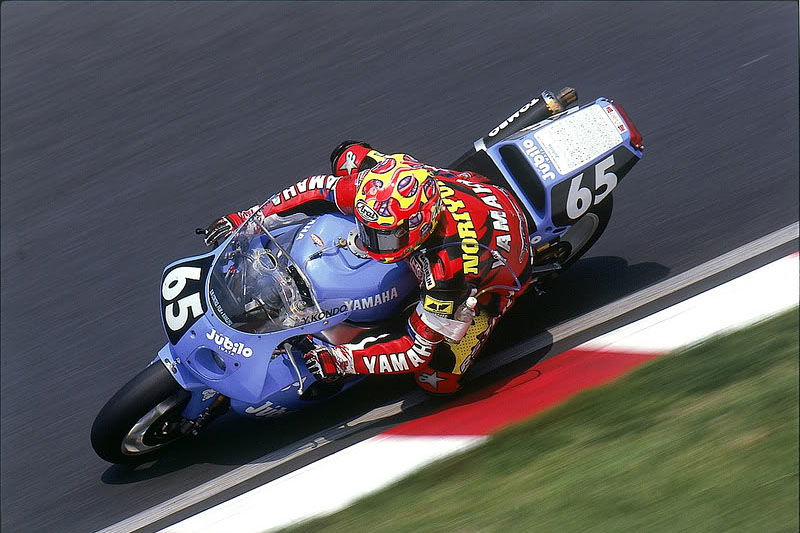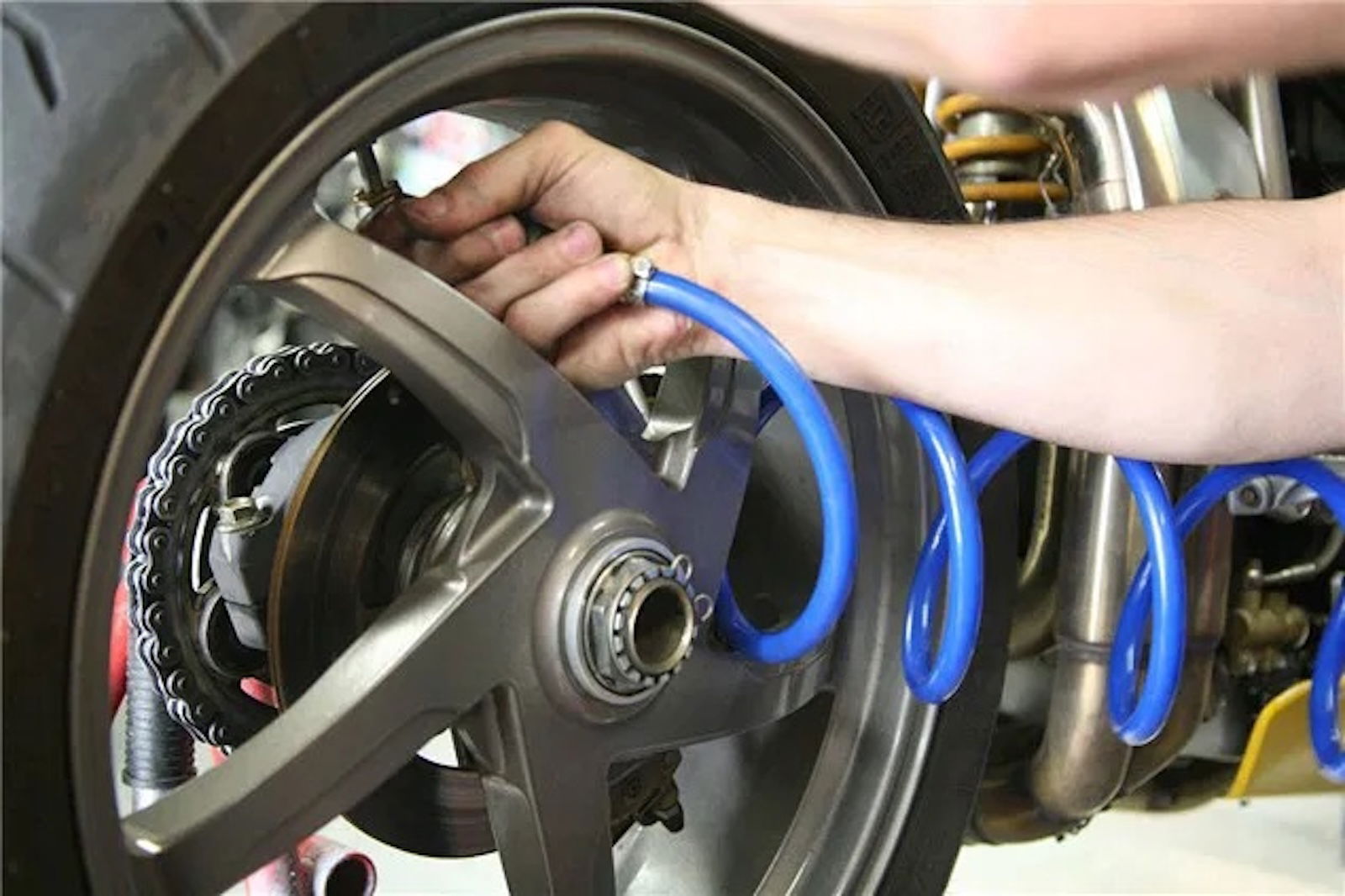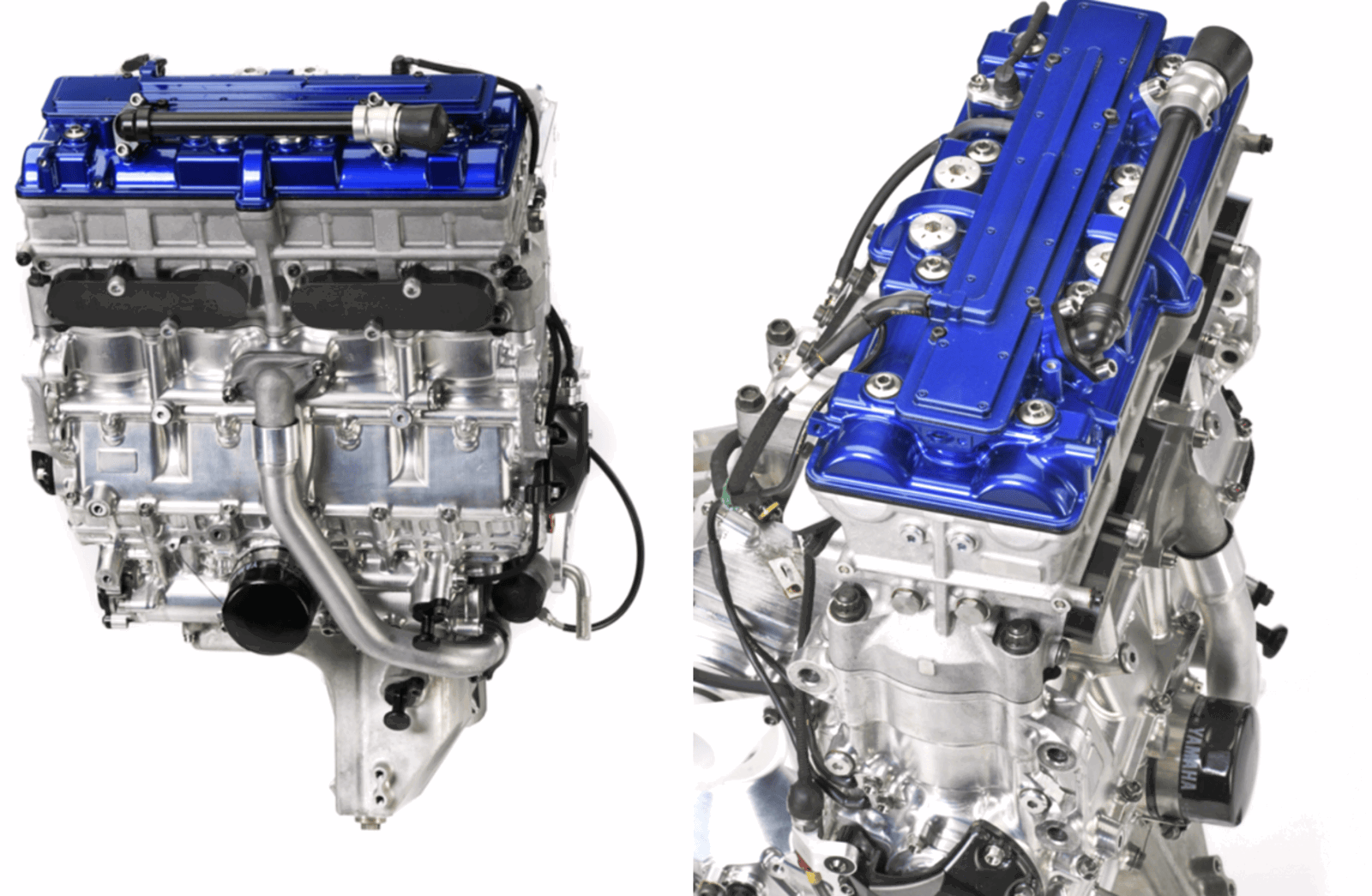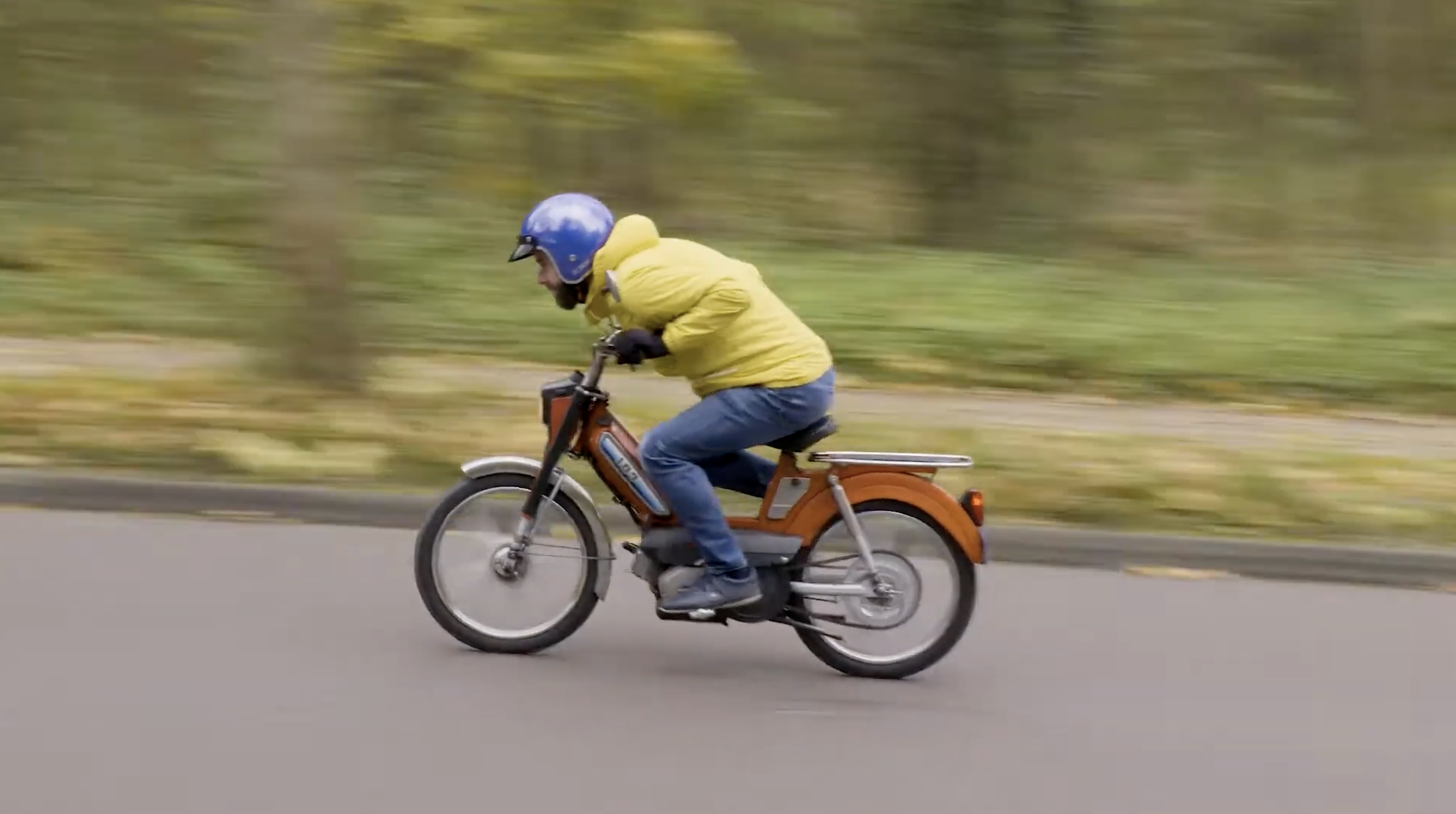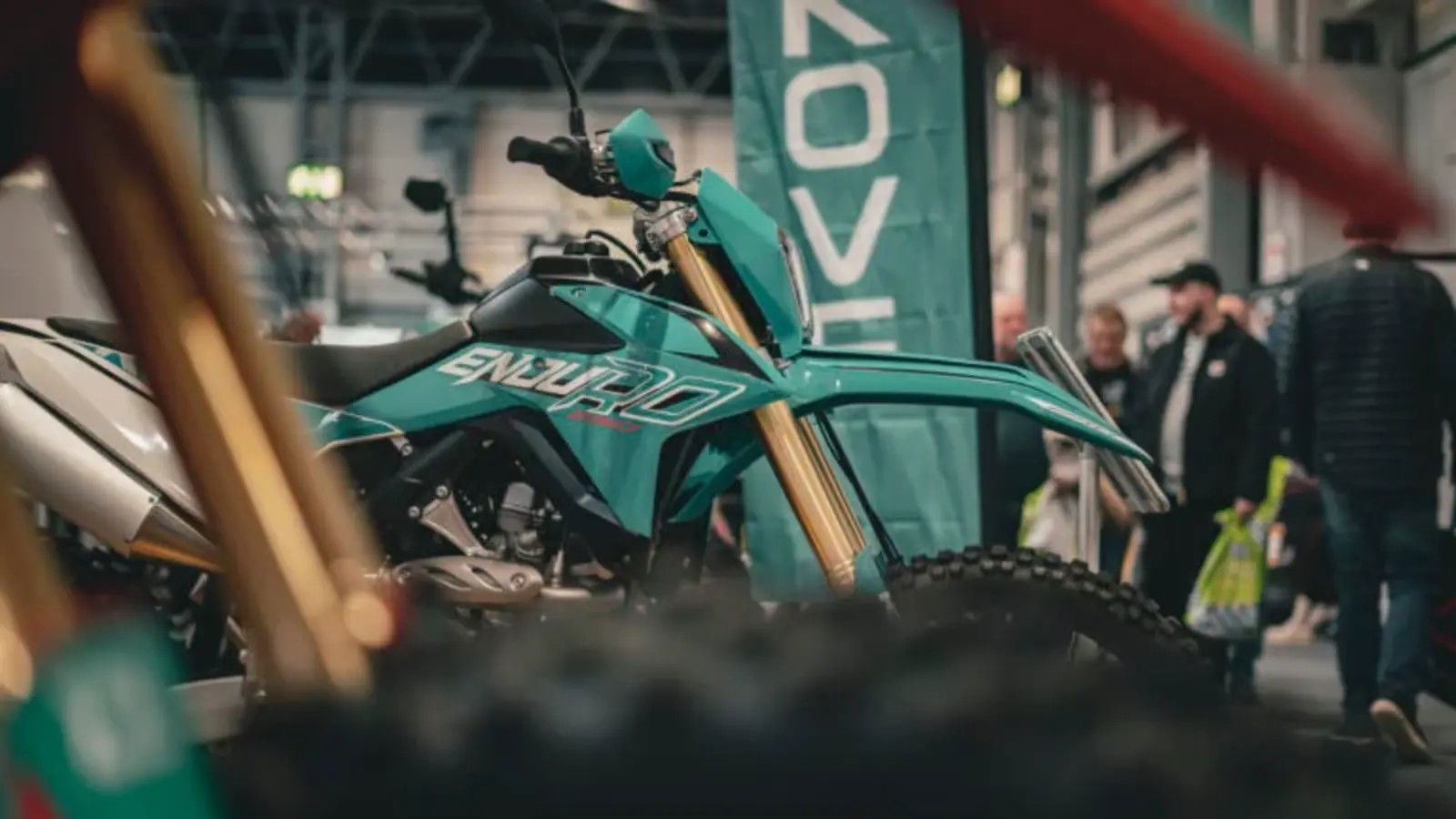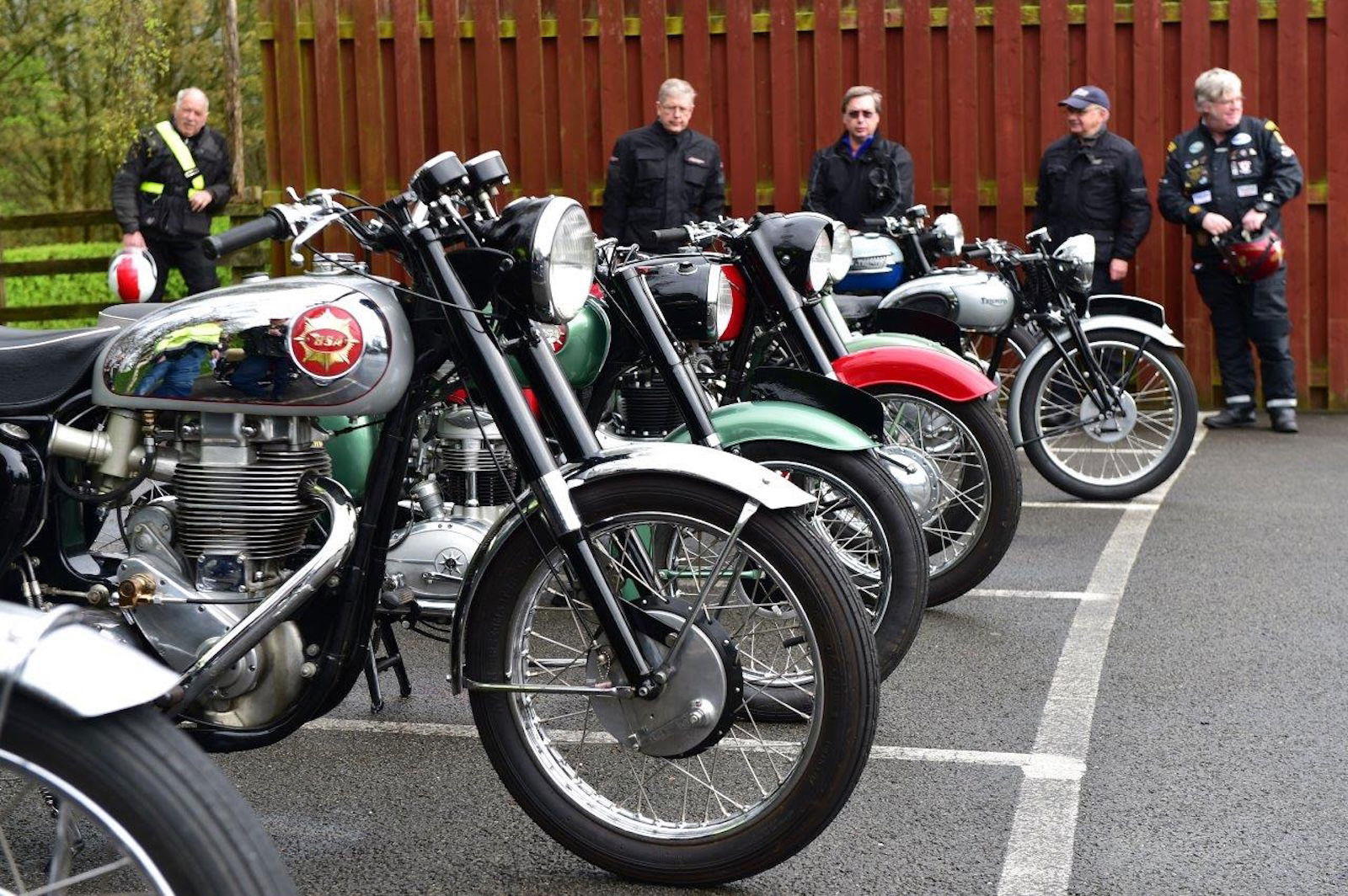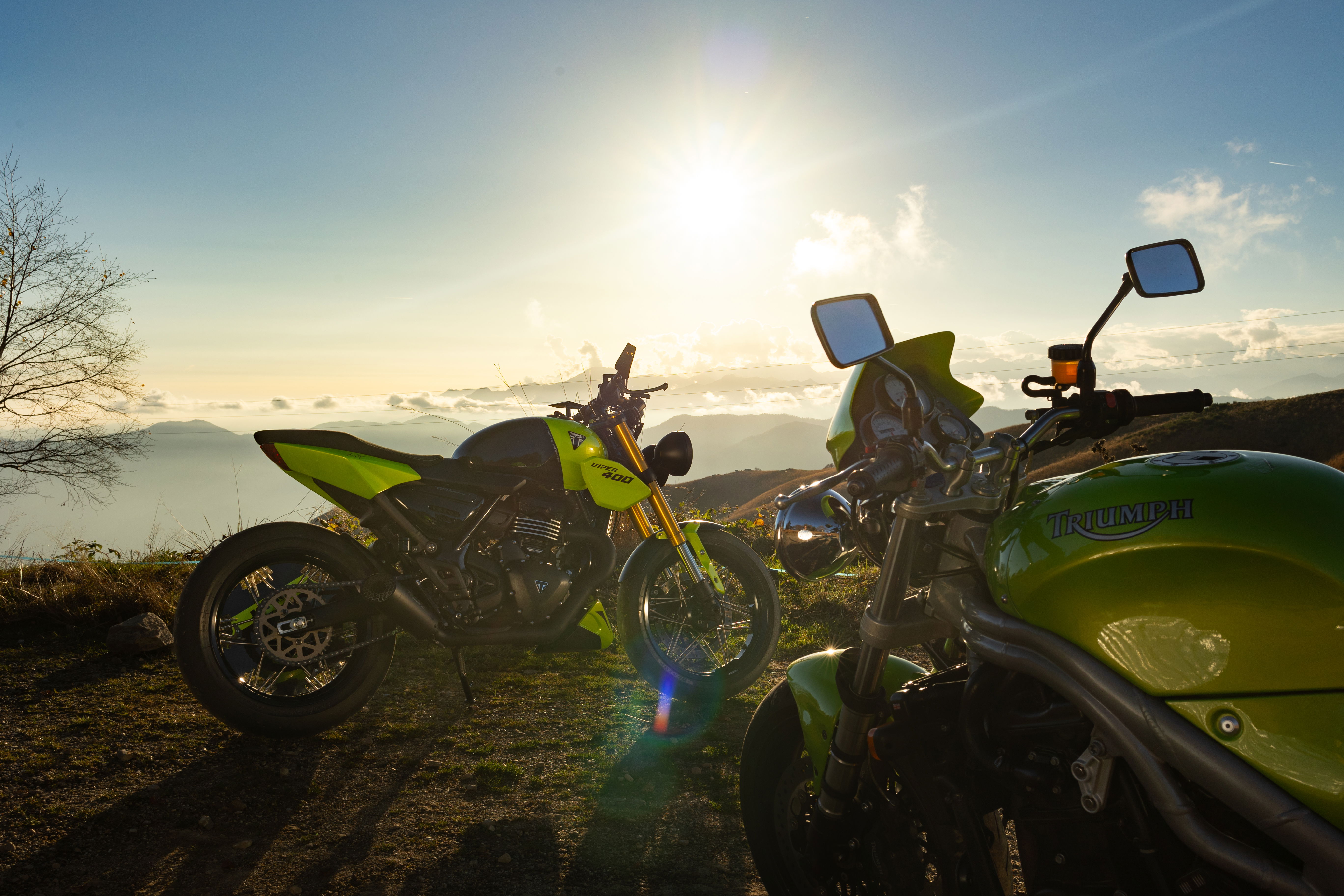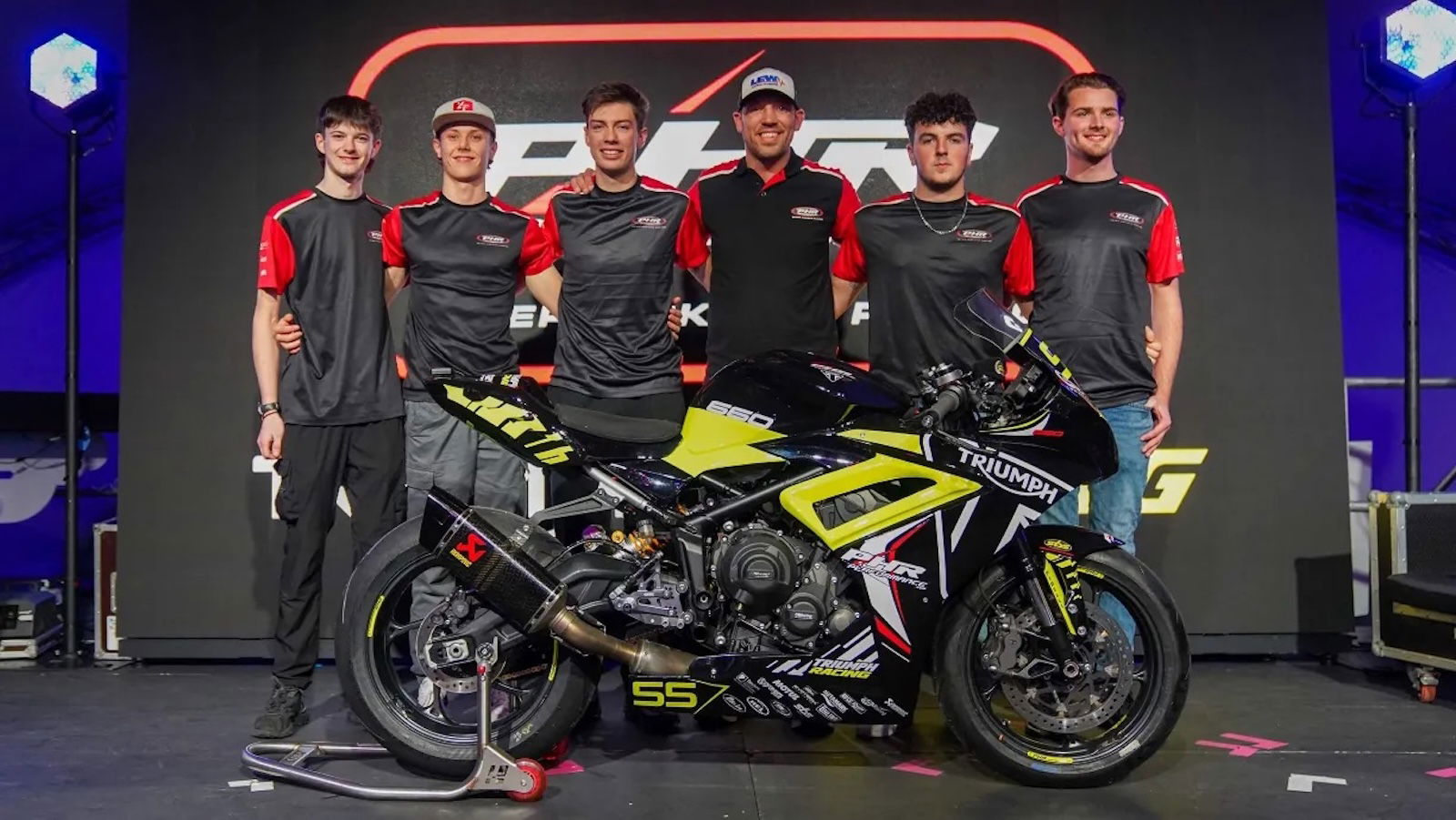Altitude Sickness - Tackling Pikes Peak
There is a race twelve miles long, with 156 flat-out bends on a mix of tarmac and dirt. on any one of those corners, running off the track means plunging over a cliff and hitting rocks. We tackle the legendary Pikes Peak hillclimb

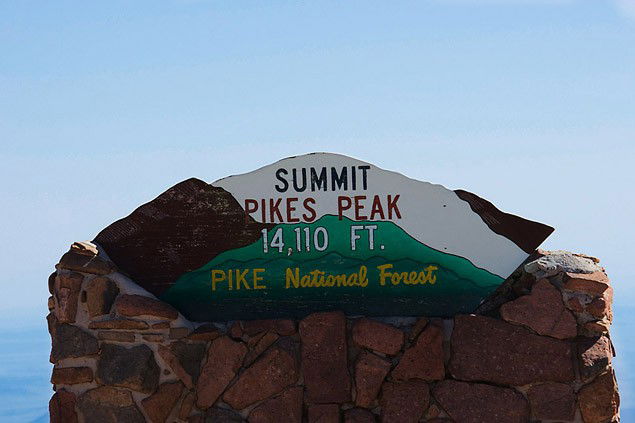
At 14,000ft the air temperature is 28 degrees cooler than it is at sea level. As you climb the atmospheric pressure halves and the air grows painfully thin as your heart rate soars to 170bpm and your body struggles to supply enough oxygen to your brain. You’re breathing hard, lungs working overtime; it’s like running on a treadmill while trying to breathe through a straw.
Right now my lips are turning blue, my head is giddy, my concentration’s wavering and there’s an 80mph corner looming, one complete with a loose gravel surface with a sheer drop on the outside. My tongue is so dry it’s sticking to the back of my throat and I start dry-wretching in my helmet. Shaking my head to clear my mind and focus on the corner ahead, I pull my weight over the front, leaving the rear tyre to slide wherever it wants. For this is Pikes Peak, I’m three turns from the top and nothing’s getting in the way of me posting a decent race-time. Nothing.
I’ve wanted to race Pikes Peak ever since I first heard about the place some 20 years ago. Winding impossibly up the side of a mountain just outside Colorado Springs in Colorado USA, the race is 87 years old and has claimed countless lives since Lieutenant Zebulon Pike first set
foot on the 14,110ft summit. The first race to the top was held on August 12th, 1916 (while the rest of us were busy battling the Germans in France) and Rea Lentz from Washington won with a time of 20mins 55s. Nearly a century later the machinery has evolved somewhat, the times have been halved but the route remains identical. By 2012 the course will be tarmac from bottom to top (currently it’s 50% dirt and 50% paved) and when the granite gravel is covered over so will be a large part of what makes Pikes Peak such a unique challenge.
Our team was assembled by the superhuman efforts of Landers Sevier from Birmingham, Alabama. Landers made our assault on Bonneville’s salt flats possible two years ago. “I’ve got a
KTM690SMC and an Aprilia SXV450 – which do you want?” he asked way back in May. “The KTM,” I replied. “The Aprilia is bound to blow-up.” Prophetic words as the 450 lunched its internals just two days before the start of the event. Only an epic re-build got Landers back in the race. Team Ebsco/Visordown would be completed by John Pierce, ex-racer and a resident of Nashville, Tennessee, riding an Aprilia SXV550. The 70bhp V-twins sounded amazing on their open race pipes; my KTM was just loud. Our three-man squad looked the bollocks: bikes all stickered up with sponsor’s logos, flashy race leathers and helmets, and (most importantly) we had the biggest rig in the paddock: a 33ft motorhome rig as supplied by buyfloorsdirect.com.
If races were won in the paddock, we had Pikes sewn up before a single flag was waved...
Practice runs & early starts
Our alarm goes off at 2.30am. Practice begins at 5.30am and we have to be off the mountain by 8am. My jetlag works in my favour; 3am is 10am in my head so I’m suffering the least. John Pierce, a man so laid-back he sounds like he’s on a permanent morphine drip, is vocal in his dislike of the early starts. “Oh man, this is horrible. I’m too tired,” he cusses in his southern drawl. Being British and therefore made of sterner stuff than these feeble Americans, I tell him to stop moaning. How these idle Yanks have taken over the world is beyond me.
The mountain is broken down into three sections for the purposes of practice, the idea being that you get five or six runs on each section before piecing it all together on race day. It’s 25?C in Colorado Springs but freezing cold up on the hill, people moving silently by the light of generators as they prep their bikes under the stars. Th e machinery on display is an eclectic collection, everything from 1972 Triumph flat-trackers to home-made, TL1000-powered sidecars. Some lunatics are even racing Buell Lightnings and there’s a KTM 990 Super Duke on race wets.
We get the morning briefing from organisers Sonny Anderson and Bill Brokaw. It’s like an audience with Statler and Waldorf from the Muppet show. “Take it easy up there today,” they chuckle together. “It’s day one and we don’t want anyone getting hurt. Knowing the road is everything here, that’s what you have to work at, you bozos.” Hurr hurr.
Briefing over, it all gets a bit weird as we bow our heads in prayer. “This is a race for life,” says a preacher (who looks remarkably like Jesus) over the din of warming engines. “Thank you, oh Lord, for giving us this beautiful day.” Just after telling us it’s a race for life, he rattles off a list of those who’ve died on the mountain or suffered heart attacks just off it.
And with that, we head onto Pikes Peak for the first time. The first three miles are fast, sinuous asphalt. It’s like the foothills of an Alpine pass, with positive cambers and easily-read, hugely enjoyable corners – I live for this kind of riding. At Picnic Grounds the road dissolves into dirt, swept and grippy. Your initial reaction is to knock it down to second gear, but that soon gives way to full-throttle, fourth-gear confidence.
We only get limited runs because the KTM’s playing up, but we post respectable times between 6min 18s (Pierce) and 6min dead (me). This was to set the trend for the coming days, Landers edging ever-closer to my times until we’re dead-level between Devil’s Playground and the summit.
Ridden in sections, the air of mystery is stripped out of Pikes Peak and it seems less intimidating, but none of us could remember any of the 156 corners from one day to the next.
Into thin air: Racing at high altitudes
One of the factors that makes Pikes Peak so unique is the altitude. Up here, typical air pressure is around 600mbs; we’re used to around 1000mbs in the UK. That means you have 40% less air density to play with, which has a huge effect on several things.
Cooling
There’s less dense air flowing through the radiators and therefore engines overheat. The Aprilias were buzzing their fans like manic wasps and pissing coolant out of their overflow bottles trying to keep temperatures down. On the turbocharged cars it’s a huge problem that requires massive radiators and intercoolers.
Downforce
Not a factor on bikes, but the reason the Open Wheel and Unlimited cars have such massive rear wings is that because the air is thinner, they need a bigger wing just to keep their cars on the road. “We’re running 900lbs of downforce,” says Open Wheel winner Paul Dallenbach. “But we ran this car at the Goodwood Festival of Speed two years ago, forgot to put a smaller wing on the back, and it just ripped the whole wing off because the air was so much more dense.”
Fuelling
The higher you go, the less oxygen you have, which means the mixture gets richer and richer. Davey Durelle was spotted with a vast computer lashed to his handlebars as he took readings to adjust his mapping. Getting the fuel map right is critical for the fast boys; for the rest of us, it’s just a question of not slowing down.
Your body
Because of the speed of the ascent, your body doesn’t have time to adjust to the thinner atmosphere. Consequently the altitudes that you practised at on the days before without problems now make you lightheaded during the race. Typical symptoms are lack of concentration, shortness of breath, a numbness of the lips and a crashing headache. And all of this while riding at 80mph on dirt on the side of a mountain with no safety barriers…
2 - Pikes Peak

Race day
Race day dawns at 2.30am, naturally. Battered by a mild dose of food poisoning and Pierce’s insistent and terrible farting, all of us are exhausted. Incredibly, despite driving to the mountain for the last four days on the trot, we miss the exit for the mountain. Landers nearly rolls the motorhome trying to make it.
At 3am there’s a mile-long queue of spectators waiting to get onto the mountain. They’ve been camping all night and most of them are drunk as lords. “Kick that mountain’s ass!” one of them roars as we pass, stumbling and spilling his Coors; “Get some!” We feel like Marines moving to the front line.
The morning briefing with Statler and Waldorf contains the funniest explanation of flag protocol I’ve ever heard in my life. When asked about red flags, the answer comes back thus: “We’ve enquired about this and if a red flag is waved during race conditions, carry on as if there’s nothing blocking your way. A red flag constitutes nothing more than a yellow flag.” Should we slow down if we see a yellow flag? “Not sure – best use your common sense.” Utter genius. Pikes Peak makes its own rules and long may it continue.
The cars and trucks are warming up; 1000bhp turbocharged V8s with wings on them the size of a Boeing, monster trucks with tyres that could crush a car, engine blocks bigger than a Hayabusa – it’s old-fashioned horsepower meets the Dynojet fuelling map. Our bikes are perfect. Having been prepped at local legend Davey Durelle’s immaculate workshop the day before, Team Ebsco/Visordown are getting ready for the race by catching forty winks in the motorhome. At 5.30am one final and monstrous guff from Pierce drives us all gasping for air outside and we start preparing in earnest.
There are only 2,500 spectators on the hill but the buzz is tangible. Families of rednecks are whooping and hollering, meeting the stars of the race and requesting autographs. Nobody asks for ours. A disorderly line of cars and bikes forms at the base of the course, sheltering from the sun and grabbing nervous, last-minute conversations with other racers. I speak to rally legend Marcus Gronholm and Japanese driver Nobuhiro Tajima, the fastest man up the mountain. Tajima’s looking to break the ten minute barrier. “I go maximum attack, this is my way!” he laughs. Any advice for a rookie? “Be more like samurai, not kamikaze!” he roars, slapping me on the back. Thanks, chief.
I get numerous comments on my race number - 911 is the emergency service number in the US, or is it a reference to 9/11? - then vintage cars go first, then quads, then the ultimate cars. Andrea Eriksson doesn’t make it two miles before launching his 800bhp Ford into a tree at 90mph.
Landers is in the 450 class ahead of us and I try messing with his head: “Watch turn five, I hear it’s really slippery.” The flag drops and Pierce and I watch as Landers gets a flyer of a start, holeshotting his group of five and blazing off into the distance. I’ve got a race on my hands to beat the old goat, that’s for sure.
Five minutes before my start I’ve got motocross butterflies in my stomach and Pierce is visibly shaking. “I’m shitting in my pants, man,” he says. “I haven’t been this scared in years.” Two minutes to go and we line up behind the fastest qualifiers in our group. They’re flagged off and then it’s our turn. Transponders; check. Helmet-cams; on. One minute to go; goggles on, engines warming. 30 seconds; watch the flag man like a hawk. 10 seconds; steady 5000rpm, motocross launch, green flag... Go!
I nail my start and lead the pack into the first turn. Behind me, Pierce forgets to put his bike in gear and is last off the line. The KTM feels punchy and responsive; the brakes are monster and the Dunlop wets are sheer grip off the line. I don’t look back, just get my head down and go mental. At Picnic Ground I hit the dirt flat-out in fourth gear and move all my weight to the front as the rear pendulums in the dust. Into Brown Bush hairpin, the spectators are inches from my face and yelling support.
I ride a powerslide all the way out; it’s amazing the speed and ferocity you can fi nd under actual race conditions. I have no idea if there’s anyone else on the hill – all alone as we thunder through Glen Cove, where I catch a massive bump that kicks my arse two feet in the air at 80mph. From there it’s into the hairpin section. Maximum attack! Tajima’s words ring in my ears as we set about the series of five hairpins. I remember this section and although a mistake means pitching 100ft off the mountain onto rocks, we’re not hanging about. Th e rear tyre slides predictably out of the hairpins; more roaring crowds, and we’re back on the dirt at Devil’s Playground.
That’s when my head goes light, my lips turn blue and I start dry-gagging in my helmet. Nine miles into the course and at 13,000ft the early effects of hypoxia are kicking in. Bet Valentino doesn’t have to deal with this. Into Bottomless Pit with a 70mph slide where getting it wrong means a 1,600ft vertical plunge to the bottom. Our photographer Kevin is somewhere here but he’s the last thing on my mind. It becomes harder and harder to concentrate. I have no idea where the next corner goes. I knock the bike down into second gear, only to be presented with an opening, fourth-gear corner. Sawing hopelessly at the throttle, trying to carry as much speed as possible, I scream at myself in my helmet and hold the bike sideways through Cog Cut and take the chequered flag. Done it!
Elation surges through me and I’m actually quite emotional, hammering at the handlebars and whooping. Pierce comes in and I give him a huge man-hug: “Awesome work fella, just awesome.”
We posted respectable times, we didn’t crash and didn’t make arses of ourselves. Hell, I even received a cheque for $125 for my fifth place finish. If we can ever afford to return, we’ll be back in a shot. This is one of those unique events that gets under your skin. And you can only get better...
Anatomy of a Pikes Peak racer
There are two schools of thought when it comes to the quickest way up the mountain; a Supermoto on 17” wheels or a flat-tracker on 19” rims. These days the Supermotos are quickest. They’ve got bigger engines, more advanced fuelling and long-travel suspension, which allows the rider to be more aggressive. But the motocross-based and classic flat-track bikes look the bomb going sideways into and out of every corner, and bring some classic Americana to the event.
Engine
A Stock tune optimised for the altitude is the way to go. The twin-cylinder Aprilia SXV450 was super-fast on the lower sections but ran out of puff higher up – There’s no substitute for cubes and the big piston/light weight combination is the best way to beat the thin air
Exhaust
Anything carbon or Titanium is the ticket. We used Akrapovic on the Aprilias and FMF on the KTM; top-line systems that flow more gas, naturally lean the engines out and optimise the stock fuelling maps for operating altitude
Fuel Injection
You’re looking at 40% less power near the top, so the serious boys all run Power Commanders to lean off the mixture. For first-timers it’s all about track knowledge – the 5-7% power increase over stock is wasted if you don’t know where you’re going
Chassis suspension
We ran stock suspension, though Racetech put stiffer springs onto Landers’ 550. You want plenty of rebound damping in the rear and pliant forks; as soft as they’ll go without being loose on the tarmac sections
Brakes
A small air bubble in your brake lines at the bottom will expand and become a real issue at the top as the pressure drops. It happened to Pierce. Bleed those brakes!
Gearing
Landers ran 5 teeth more than Pierce on the rear sprocket and was running out of revs. I left my gearing completely stock and it worked well – you’re flatout with revs to spare on the lower sections and only using up to fourth gear on the gravel.
Tyres
We used Dunlop race wets, with a soft compound front and a medium rear. With no warming you could go straight into huge lean angles on the tarmac and the fronts found monster levels of grip in the dirt. They slid predictably out of the tarmac hairpins and lasted for all three practice days and the race itself – Outstanding
3 - Pikes Peak
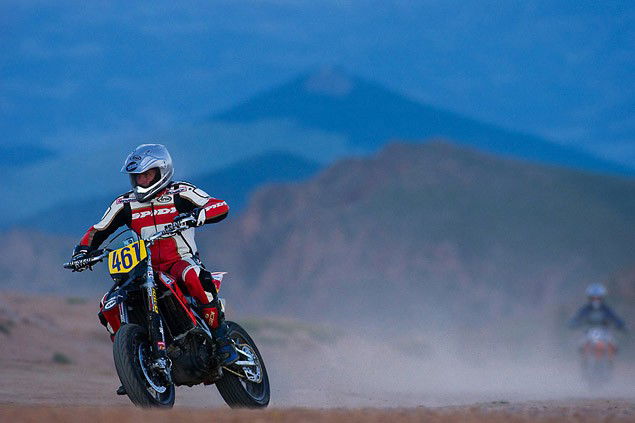
Landers on how to tackle Pikes Peak all wrong on the day
“Thousands of dollars spent, a week off work, one shot at the top – and I blew it…”
No time, no budget; another typically English assault on a legendary American race. My mind was dinging like a cash register thinking of all the expense, and how on Earth we could put together a competitive team in just four weeks.
John was assigned a 2008 KTM 690SMC for the 750 class while I went for an Aprilia RXV450 that needed to be converted into a supermoto. Buchanan Spokes got me lined up with 17” rims laced to the Aprilia hubs. Dunlop supplied race wets while suspension experts RaceTech reworked my forks and rear shock. I added a 320mm Brembo rotor and radial caliper. Meanwhile, the KTM was merely stripped of any dead weight.
After 100 man-hours spent prepping bikes and providing documentation proving our worthiness to compete (including a statutory 3-page medical which cost me $300 and that the bastard Cantlie just copied, changing the words ‘Satisfactory’ on my medical to ‘Incredible’ on his) we were set to begin the 1500-mile journey to Colorado. Just one last tuning session on the dyno and my transmission seized solid; ah. I loaded my blown-up work of art into the motorhome and set off for Colorado. Over fifty phone calls later, a call came in from a Amauri Nunez, the crew chief of Aprilia USA’s supermoto effort: “I’ll be driving in from California day after tomorrow. I can bring you a motor.” The man was a life-saver.
My first run was a blast; Pikes is open and twisting. I returned to find a dejected Cantlie with a bike that wouldn’t run. Sessions passed as we worked to bypass a magnetic sidestand kill-switch apparently designed by NASA. Finally, the KTM roared to life and our qualifying times were competitive. Suddenly something struck me – I didn’t care where I finished in the event as long as I beat my team-mates. It was all that mattered.
After two days running similar times to Cantlie, I knew I had him covered come race day. And I knew that he was thinking the same. It didn’t matter that we were in different classes – our individual times up the mountain would settle a score that goes back ten years; who’s fastest? The clock would be the judge.
The green flag dropped and I got the holeshot into turn one. After three miles I glanced over my shoulder and with no one in sight I began to cruise, totally forgetting about my race against Cantlie and the Pikes clock. When they reached the top out of breath from the lack of oxygen and their full-bore pace I realised I’d blown it entirely. I totally forgot that Pikes Peak was the definition of a timed event and not a sprint race. After thousands of dollars and endless hours spent preparing the bikes, and after overcoming insurmountable odds to even compete, I blew it. Cantlie was 30 seconds quicker on the day and that’s all there was to it. Gutted. But I will return...

